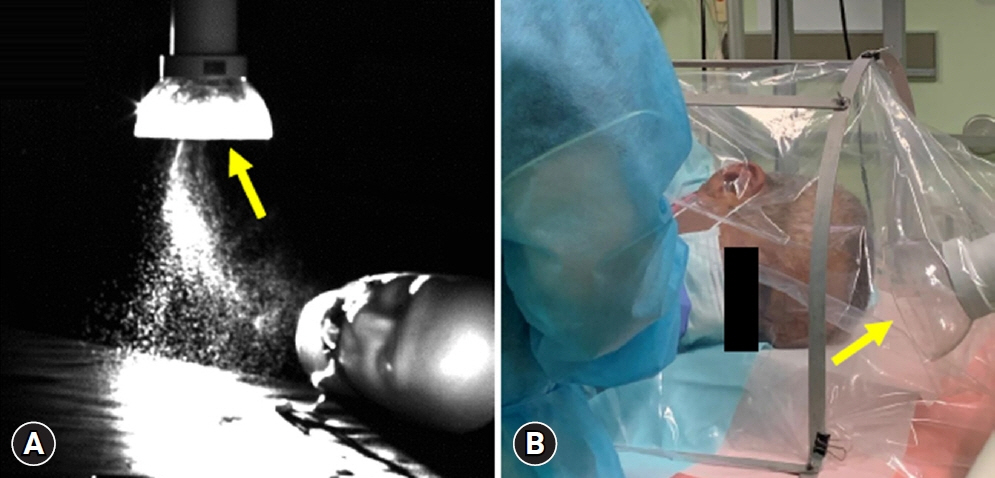Clin Endosc.
2022 Nov;55(6):815-818. 10.5946/ce.2022.025.
Aerosol extractor for COVID-2019 prevention during endoscopic procedure
- Affiliations
-
- 1Department of Endoscopy, Fukushima Medical University Hospital, Fukushima, Japan
- KMID: 2536083
- DOI: http://doi.org/10.5946/ce.2022.025
Figure
Reference
-
1. Hikichi T, Jun N, Hamada K, et al. A novel endoscopic mouthpiece for COVID-19 prevention. Clin Endosc. 2022; 55:160–162.
Article2. Kobara H, Nishiyama N, Masaki T. Shielding for patients using a single-use vinyl-box under continuous aerosol suction to minimize SARS-CoV-2 transmission during emergency endoscopy. Dig Endosc. 2020; 32:e114–e115.
Article3. Sagami R, Nishikiori H, Sato T, et al. Endoscopic shield: barrier enclosure during the endoscopy to prevent aerosol droplets during the COVID-19 pandemic. VideoGIE. 2020; 5:445–448.
Article4. Simpson JP, Wong DN, Verco L, et al. Measurement of airborne particle exposure during simulated tracheal intubation using various proposed aerosol containment devices during the COVID-19 pandemic. Anaesthesia. 2020; 75:1587–1595.
Article5. Saito T, Fujishiro A, Asai T. Aerosol extractor for airway management of COVID-19 patients. J Anesth. 2021; 35:323.
Article
- Full Text Links
- Actions
-
Cited
- CITED
-
- Close
- Share
- Similar articles
-
- Hysteroscopy in COVID 19 pandemic: safety concerns
- Coronavirus Disease 2019 Transmission: Blood Viremia and Aerosol Generation from Spinal Surgery. Is There an Increased Risk to the Surgical Team?
- Assessment and Management of Dysphagia during the COVID-19 Pandemic
- Comparison of Endoscopic Removal of Disk Batteries in Children
- How to Cope with COVID-19 in the Endoscopy Room




